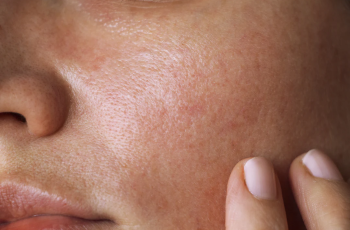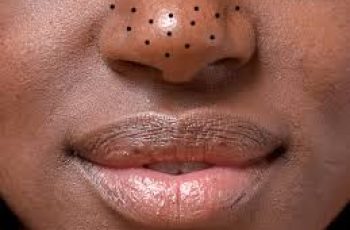
How Well Do You Know Your Skin? Take This Simple Test to Discover Your Skin Type
Understanding your skin type is essential for maintaining healthy skin and choosing the right skincare routine.
Whether you have dry, oily, combination, normal, or sensitive skin, your skin type influences the products and treatments that will work best for you.
Your skin type isn’t just a random factor; it’s shaped by a combination of genetics, the environment you live in, lifestyle choices, and even your overall health.
Identifying your skin type can allow you to address skin issues like dryness, excess oil, irritation, or acne in a more targeted way.
This awareness helps you choose skincare products that complement your natural skin needs.
If you’re wondering what skin type you have, don’t worry! Take this easy test and find out what works best for you.
This simple quiz can offer a great starting point in understanding your skin’s requirements and how to meet them.
The Five Common Skin Types Explained
There are five primary skin types, each with its distinct characteristics and needs. Understanding these categories will allow you to tailor your skincare routine accordingly.
Dry Skin
Dry skin lacks sufficient hydration and struggles to retain moisture. People with dry skin may experience rough, flaky patches, tightness, and redness.
This skin type can also lead to premature aging signs like wrinkles and fine lines if not properly cared for.
Oily Skin
Oily skin produces an excess amount of sebum (skin’s natural oils). This often results in a shiny or greasy appearance, especially in the T-zone (forehead, nose, and chin).
Oily skin is also prone to acne, blackheads, and clogged pores, which require attention and specific treatments.
Combination Skin
Combination skin is exactly as it sounds: a combination of dry and oily areas on the face. The T-zone may be oily and prone to breakouts, while the cheeks and other areas may feel dry or even tight.
This can make it tricky to find the right products for each part of your face.
Normal Skin
Normal skin has a balanced production of oil and moisture, making it neither too oily nor too dry. It has a smooth texture and is less prone to acne or flaking.
However, even people with normal skin must use a routine that helps maintain this balance.
Sensitive Skin
Sensitive skin tends to react more strongly to environmental factors, skin care products, or even stress. It may redden, burn, itch, or develop rashes after using certain ingredients.
Sensitivity can vary in severity, so it’s important to choose products that are gentle and soothing.
How to Identify Your Skin Type
Finding out your skin type at home is easy! You can take a quick skin test to determine which category your skin falls under.
A simple method involves washing your face with a mild cleanser, then not applying any products for about 30 minutes. After this time, gently blot your face with a piece of blotting paper.
If it absorbs oil, you’re likely dealing with oily skin. If it doesn’t, you may have dry or normal skin.
For combination skin, the blotting paper might show oil in the T-zone (forehead, nose, chin) while the cheeks remain dry.
This simple test gives you insight into your skin’s needs and helps you make informed decisions about your skincare routine.
Why Knowing Your Skin Type Is Crucial for Effective Skincare
There are countless skincare products on the market, each claiming to solve specific skin issues. The sheer number of options can be overwhelming, which is why knowing your skin type is so important.
Your skin type dictates what kind of products will be most effective for your needs.
For example, people with oily skin should focus on products that control excess oil and prevent acne.
On the other hand, those with dry skin need products that provide long-lasting hydration and help restore moisture.
Sensitive skin requires extra care to avoid irritating ingredients that can cause redness or discomfort.
Once you know your skin type, you can avoid products that may exacerbate problems, and instead choose formulas that work with your skin’s natural tendencies.
This helps to prevent irritation, over-drying, or clogged pores.
How to Care for Different Skin Types: Essential Tips for Healthy Skin
Every skin type has specific care requirements, so knowing how to properly care for your skin will help you maintain its health.
Let’s look at some essential skincare practices recommended for each skin type.
1. Protect Your Skin From the Sun’s Harmful Rays
Sun protection is a crucial aspect of skincare for all skin types. The sun’s ultraviolet (UV) rays can lead to sunburn, premature aging (such as wrinkles and sun spots), and even increase the risk of skin cancer.
The American Academy of Dermatology strongly advises using a broad-spectrum sunscreen with an SPF of 30 or higher. Sunscreen should be reapplied every two hours and after sweating or swimming.If you have dry skin, opt for a sunscreen that includes moisturizing ingredients to help hydrate the skin. If you have oily skin, look for oil-free or gel-based sunscreens.
Sensitive skin types can benefit from sunscreens containing zinc oxide or titanium dioxide, which are gentle and less likely to cause irritation.
In addition to sunscreen, take other precautions to protect your skin from the sun:
Wear sunglasses and a wide-brimmed hat.
Choose lightweight, sun-protective clothing.
Seek shade during peak sun hours, from 10 a.m. to 4 p.m.
Use a lip balm with SPF protection to protect your lips from sunburn.
2. Moisturize Regularly
Moisturization is an essential part of any skincare routine, as it helps to maintain the skin’s hydration balance.
For those with dry skin, moisturizing is especially important to prevent tightness and flakiness. Moisturizers trap water in the skin, preventing moisture loss.
People with oily skin might think moisturizing is unnecessary, but that’s not true. In fact, not moisturizing can lead to the skin producing even more oil to compensate for the lack of hydration.
For sensitive skin, be mindful of the products you use. Opt for products that don’t contain irritating fragrances or alcohol, which can worsen sensitivity.
For normal or oily skin, a light lotion or gel is sufficient after a bath or face wash.
For dry or sensitive skin, creams or ointments may be more effective as they lock in moisture and are less likely to irritate.
3. Select the Right Skincare Products for Your Skin Type
Using products tailored to your specific skin type can make a significant difference in the health and appearance of your skin. Here’s how to pick the right products based on your skin type:
For Dry Skin:
Avoid products that contain alcohol or strong fragrances, as they can further dry out the skin.
Use gentle, fragrance-free cleansers and opt for creams or ointments that contain hydrating ingredients like hyaluronic acid, shea butter, and glycerin.
For Oily Skin:
Look for oil-free or non-comedogenic products that won’t clog your pores.
Salicylic acid-based cleansers work well for controlling excess oil production.
For Sensitive Skin:
Stick to gentle cleansers without harsh chemicals, fragrances, or alcohol.
Choose products that are simple and soothing, like basic cleansers, hydrating moisturizers, and sunscreens free from irritating ingredients.
If you’re not sure which product is right for your skin type, it’s always a good idea to test new products on a small patch of skin before applying them to your whole face.
Consulting with a dermatologist or skincare professional can also help you make better-informed decisions about your skincare routine.
Final Thoughts: Finding What Works for You
While skin types are generally categorized into dry, oily, combination, normal, and sensitive, it’s essential to remember that everyone’s skin is unique.
Factors like age, climate, diet, and lifestyle can affect how your skin behaves. So, even if you identify with one skin type, you might notice changes over time.
Once you’ve determined your skin type, use this knowledge to build a skincare routine that addresses your specific needs.
Stick with products that are designed for your skin’s unique characteristics and don’t be afraid to adjust as you learn more about what works best for you.
In the end, healthy skin is all about consistency. Whether it’s protecting your skin from the sun, moisturizing regularly, or choosing the right products, small changes can make a big impact.
Take the time to understand your skin type, and your skin will thank you in the long run.


